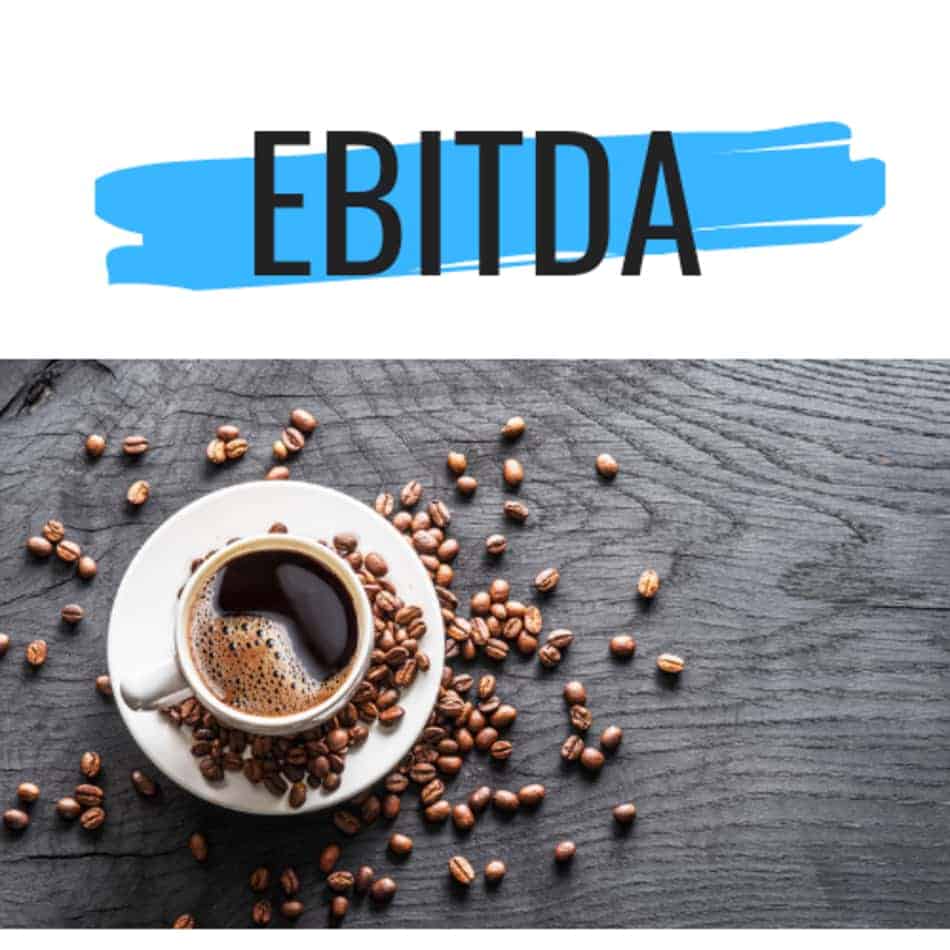

One of the most used ways of controlling and measuring the overall health of your coffeeshop is by using what is called EBITDA. The term alone is difficult to understand. I’ll try to put it in more simple words:
EBITDA means the earnings of your coffee shop or business before subtracting the interests and amortization (what you pay for a loan to a bank or lender), the taxes (what you must pay to your government), and depreciation (the loss of value of the equipment as time passes).
So we are not accountants. But as coffee shop owners we have seen value into analyzing data that gives you a sense of the health of your business, and lets you make focused decisions. Follow along with this post if you want to go deeper into the factors that compose EBITDA in relation to a coffee shop as well as the advantages of calculating this seemingly difficult number.
What are the advantages of calculating the EBITDA for your coffee shop
First and foremost, using an EBITDA means you are monitoring the health of your business. In order to obtain this number you must know how much you receive, how much you spend and how much you earn at the end of a determined period.
Knowing your EBITDA means you know if you are earning money or if you are loosing. It means you can take action over challenges and elevate opportunities. Calculating your EBITDA means owning your management, directing, and controlling your business.
An EBITDA is useful if you wish to sell your business or ask for a loan. These numbers will give your investors or buyers a sense of the overall financial status of your business.
Also, there are industry standards that you can use to compare your business. This standards will be based on a business that may have different characteristics to yours, so it is somewhat a controversial matter whether you should compare your business or not. But the value of doing this is that you are questioning your numbers and looking for ways to improve.
Elements to calculating EBITDA

The following is an illustration of the elements you can use to calculate your EBITDA. There are some variations amongst things that can be categorized under each element. Ideally, you will an accountant to make calculations for you and guide you through the various elements. However, for you as an owner it is vital that you have a general sense of the elements involved.
First: know your sales
At the top of the EBITDA is your income. In a coffee shop, this is your sales. You can categorize your sales, for example, by food, coffee beverages, alcohol and coffee bags. You can choose your categories based on the groups that you believe need special attention in order to monitor individual growth.
It is important to take note that your sales must be net, this means you must subtract any discounts you give and taxes.
One of the most critical aspects that determine your sales is the location for the coffee shop. For instance the amount of people that walk through your location or the traffic flow, the competition around, the parking available, and many other factors related to location will be determinant to the sales you make.
Also, if you have good quality and customer services, sales are more likely to increase steadily over time. So monitoring sales is very important to understand and influence the growth and health of your business overall.
Finally, sales can vary according to seasonality. So knowing what to expect for a certain time of the year is very important to calculate needed inventory and staff.
Second: Costs of goods sold

Costs of goods sold, as the word says, is how much it costed you to make the products that you sold. It is the coffee, beverages, food and other items that you sold.
To calculate you must know how much inventory, or items, you have in your coffee shop at the beginning of your period (initial inventory). Then you must account what you bought (purchases), and at the end of the period you must again count what inventory you have left (final inventory). The final inventory for one month is the initial inventory for the next month.
Then you calculate your cost of goods sold by subtracting the inventory at the beginning of the month or period, adding the inventory you purchased, and then subtracting the inventory that was left at the end.
According to John Richardson and Hugh Gilmartin from Wake up and smell the coffee, if you prepare your food you should be aiming for a food cost of about 25% of your sales, and if you buy them ready of about 35%.
The aim of monitoring your costs of good sold is to identify if you are spending too much for what you are selling and there is some issue that you need to revise. For example, food could be getting stolen by employees, extra ingredients could be added to products like more ham to your sandwich, or there can be an increase in decrease because of spoilage.
Another way to calculate your inventory is to use a system. Some POS systems have software that can help you keep track of your inventory and automatically subtract it from the system when you make a sale.
Gross Profit = Sales - Costs of Goods Sold
When you subtract your costs of goods sold to your sales, you get the gross profit. In coffee shops usually, gross profits are high. But the challenge for coffee shops are all the other costs that come afterward which tend to be really high in relation to your sales
Labor Costs
This is one of your most important costs both in the percentage of sales as well as in impact over sales. Your staff is the heart and soul of your coffee business. To monitor the cost of staff in relation to sales is very important.
There is a point where you need to hire another employee to keep up with sales and quality. When you do this, what can happen is that you get employees under occupated. So this particular is a tough equilibrium to achieve.
A good alternative is to be able to hire personnel during the busiest hours but have a few full-time staff. Some experts, like Collin Harmon (from What I Know About Running Coffee Shops) recommend a staff cost between 25 to 40% of sales.
Operating expenses
As the term indicates, these are the expenses you use to operate your coffee shop. Here you can take into account: marketing, accounting, pest control, security. Also supplies like cleaning.
Occupancy expenses
As the location has an impact on sales it also does over expenses. in case you are paying for rent, which is the most usual. The rent varies whether the coffee shop is located downtown or in suburbs, inside a shopping mall or in front of the street. Rent is usually one of the largest expenses on your coffee shop, next to labor and food cost.
There are other occupancy expenses that you can take into account like utilities, water, electricity, but also property insurance, real state taxes.
Operating Profit = Gross Margin - Labor Costs - Operating Expenses
So maybe you have heard about the term operating profit. This profit is when you subtract from the gross margin, your labor costs, and operating expenses. It is at this point where a coffee shop can go, for example, from a 65% gross margin to a 10-15% operating margin, illustrating the impact that expenses have over your profit.
Depreciation
This is the value that your equipment looses as it ages. A simple way to calculate it is by dividing the total cost of the equipment amongst 10 years, and then divided by 12 months.
Amortization and interest
Amortization is the amount of your loan that you are paying back, while interest, is the percentage that you pay to your bank as a fee for their service.
EBITDA = Operating profit + Depreciation Expense + Amortization Expense
So Finally, at the end of all this you get your EBITDA, which would mean adding to your operating profit the depreciation expense and amortization expense.
The only final number you would get after EBITDA would be your Net income. The difference between these two would be that EBITDA eliminates these factors in order to not distort your numbers when compared to other businesses.
However, as coffee shop owners in the end what could be most important for you is to understand how much is left in your pocket. So ask your accountant to also calculate your net income. To have positive numbers in net income will be a major success.
